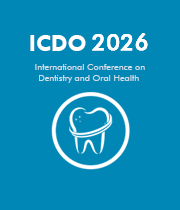Orofacial Cleft
Orofacial cleft, a congenital condition, involves an abnormal gap or opening in the oral and facial structures during embryonic development. This condition can manifest as cleft lip, cleft palate, or a combination of both, affecting the lip, nose, and roof of the mouth. Orofacial clefts arise due to genetic and environmental factors, impacting facial symmetry and function.
Early intervention for orofacial clefts often includes surgical repair, performed in stages to address both aesthetic concerns and functional challenges. Multidisciplinary care involving oral surgeons, plastic surgeons, and speech therapists is integral to the comprehensive management of orofacial clefts.
Genetic counseling and prenatal screenings play a crucial role in identifying the risk of orofacial clefts during pregnancy. Advances in surgical techniques, such as tissue grafting and laser surgery, contribute to improved outcomes for individuals born with orofacial clefts.
Orofacial clefts may lead to challenges in feeding, speech, and dental development, emphasizing the importance of early diagnosis and a coordinated healthcare approach. Support networks, including community organizations and advocacy groups, play a vital role in providing resources and assistance to individuals and families affected by orofacial clefts.

David Geoffrey Gillam
Queen Mary University of London, United Kingdom
Christopher Turner
Spacemark Dental, United Kingdom




Title : Evaluating hygienist follow up for head and neck oncology patients in secondary care: Results from a two cycle audit
Peter Basta, Newcastle Dental Hospital, United Kingdom
Title : Atypical facial pain unravelled
Christopher Turner, Spacemark Dental, United Kingdom
Title : New treatment of temporomandibular disorder through muscle balance and muscle regeneration by activation of quiescent muscle stem cells( satellite cells) with mitochondrial dynamics
Ki Ji Lee, National Reserach Foundation & Busan Medical University, Korea, Republic of
Title : MRONJ and ORN: Referral or management in primary care? Navigating guidelines in the context of long waiting lists
Alisha Sagar, NHS England, United Kingdom
Title : Managing the unexpected: An Insight into supernumerary teeth
Bahar Gharooni Dowrani, Guy's and St Thomas' NHS Foundation Trust, United Kingdom
Title : Laxative prescribing for post operative head and neck cancer patients at Derriford Hospital
Pui Sze Kylie Li, Cardiff and Vale University Health Board, United Kingdom